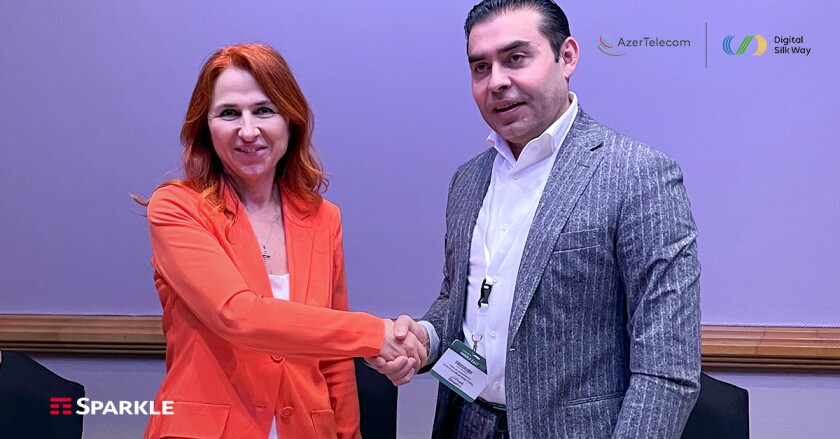The Digital Silk Way project aims to create a digital telecoms corridor between Europe and Asia through Azerbaijan, to further the development of information technologies and create a digital ecosystem in Azerbaijan, positioning it as a regional hub. Launched by NEQSOL Holding, the project is being implemented by AzerTelecom, a subsidiary of NEQSOL Holding.
“Digital Silk Way project opens up new opportunities for regional cooperation in the telecommunications sphere," said Fuad Allahverdiyev, chairman of the board of directors at AzerTelecom.
"It makes possible to create a new digital route that will be the shortest between Europe and Asia. We believe that our cooperation with Sparkle which shows a great interest to a new route will be beneficial for our companies and contribute to the acceleration of digitalization in the region.”
Under the terms of the agreement, signed during Capacity Middle East 2022, will explore new business opportunities together.
In addition, the two will also explore building a new end-to-end transmission capacity corridor between Central Asia and Europe, potentially using Sparkle’s existing backbone infrastructure that spans Turkey to Italy with onward connectivity to the main European hubs.

“In the context of an industry where cooperation among operators is key, we are particularly pleased to join the Digital Silk Way project with AzerTelecom on this new path between Europe and Asia that adds diversification - while improving performance - to the existing routes, responding to an increasingly growing need of resiliency and security in global digital communications,” added Elisabetta Romano, CEO of Sparkle.
Capacity spoke to Stuart Evers, chairman of AzerTelecom International, in the December/January 2021 issue of Capacity Magazine, during which Evers detailed plans for the company's two new subsea cable projects across the Caspian Sea and Black Sea, forming part of the Digital Silk Way project.
“The drive is not actually around subsea cables themselves; the drivers are to build this Digital Silk Way – this new route between Asia and Europe – and the subsea cables just happened to be part of that,” he said at the time.
He also shared that as a private company, the Digital Silk Way is a private system “so it’s not government based, nor are we associated with other similar projects like the Belt and Road Initiative in China.”
That said, the system will be carrier-neutral and made available to anyone who wants to use it. “One of our ambitions is to open up the region,” Evers said.





